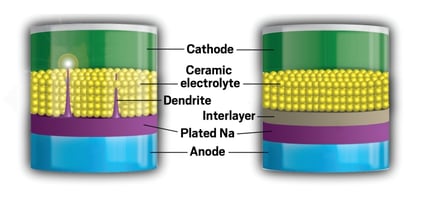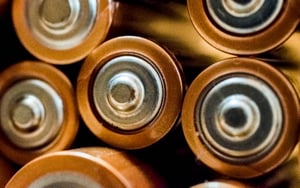Lithium-ion batteries are a type of rechargeable battery used in many products such as electronics, small and large appliances and electric vehicles and electrical energy storage systems. As the demand for rechargeable battery powered products increases, so does the importance of formulating highly performing lithium-ion batteries to power these products.
As we mentioned in a previous blog, electrolyte solutions are common in a broad range of applications including batteries formulations. It is often desirable to distinguish these low viscosity battery fluids as a quality control measure and to predict performance.  Viscosity, dielectric constant, and conductivity are critical factors that must be taken into consideration for successful development of battery electrolytes. Lithium-ion battery electrolyte solutions are typically composed of a binary mixture of cyclic carbonates, e.g., ethylene carbonate (EC), and linear carbonates, e.g., dimethyl carbonate (DMC) or ethyl methyl carbonate (EMC). The battery performance and lifetime capabilities strongly depend on the type of electrolyte, as well as viscosity. When formulating lithium-ion batteries, it is important to optimize the concentrations of cyclic and linear carbonates to achieve a battery solution with the desired viscosity & performance for the range of relevant temperatures.
Viscosity, dielectric constant, and conductivity are critical factors that must be taken into consideration for successful development of battery electrolytes. Lithium-ion battery electrolyte solutions are typically composed of a binary mixture of cyclic carbonates, e.g., ethylene carbonate (EC), and linear carbonates, e.g., dimethyl carbonate (DMC) or ethyl methyl carbonate (EMC). The battery performance and lifetime capabilities strongly depend on the type of electrolyte, as well as viscosity. When formulating lithium-ion batteries, it is important to optimize the concentrations of cyclic and linear carbonates to achieve a battery solution with the desired viscosity & performance for the range of relevant temperatures.![]() In our new application note, viscosity is measured for different electrolyte systems containing lithium salt (LiClO4), ethylene carbonate (EC), ethyl methyl carbonates (EMC), and dimethyl carbonate (DMC) using the VROC® initium one plus to understand the effect of solvent composition and salt concentration on the shear viscosity of battery electrolytes.
In our new application note, viscosity is measured for different electrolyte systems containing lithium salt (LiClO4), ethylene carbonate (EC), ethyl methyl carbonates (EMC), and dimethyl carbonate (DMC) using the VROC® initium one plus to understand the effect of solvent composition and salt concentration on the shear viscosity of battery electrolytes.
Download the full application note for free to learn more about viscosity measurements of lithium-ion battery electrolytes with varying ratios of DMC, EMC, EC, and LiClO4 concentration.
Written by: Eden Reid, RheoSense Senior Marketing and Sales Operations



